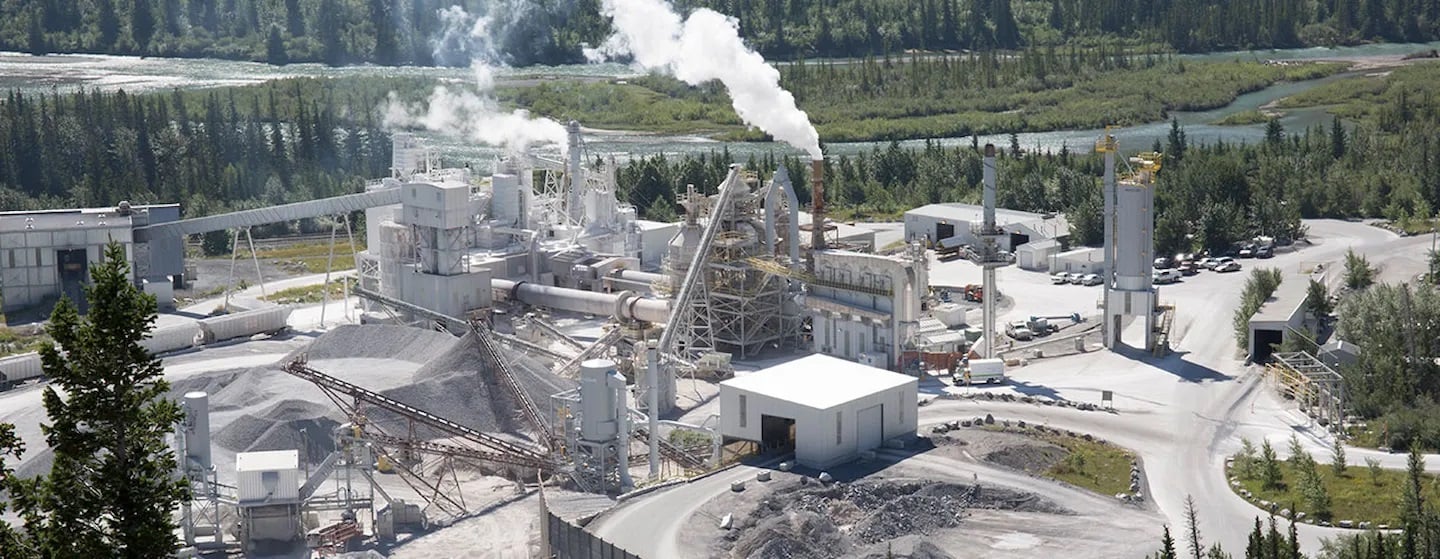
Carbon capture has spent years in the pilot phase, stuck between promise and scale. That's changing fast. According to DNV's latest Energy Transition Outlook, global carbon capture and storage capacity is set to quadruple by 2030, with cumulative investment hitting $80 billion over the next five years. But here's the shift that matters most: after 2030, it won't be natural gas processing driving growth anymore. It'll be the industries everyone said were impossible to decarbonize—steel, cement, and chemicals.
For years, carbon capture focused on easier wins like gas processing. That made sense when the tech was expensive and unproven. But as costs drop and policy support firms up, the focus is shifting to where emissions are hardest to eliminate. These hard-to-decarbonize sectors will account for 41% of all captured CO2 by mid-century, with CCS deployment in manufacturing rising nearly tenfold after 2030.
The Numbers Behind The Industrial Shift
Current CCS capacity sits at just 41 million metric tons of CO2 per year. By 2050, that number jumps to 1,300 million metric tons annually, capturing 6% of global emissions. While that's still far below what's needed for net-zero (DNV estimates it would need to scale six times higher), the trajectory shows real momentum.
North America and Europe are leading the near-term scale-up through 2030. Natural gas processing remains the dominant application today, accounting for 34% of total capture. But that share is projected to drop to just 6% by 2050 as industrial applications take over.
>> RELATED: Oil Giants Transform Gulf Coast Into US Carbon Hub

Why Heavy Industry Is The Next Frontier
Steel, cement, and chemicals aren't just hard to decarbonize—they're essential to modern infrastructure. You can't build without cement. You can't manufacture equipment without steel. And you can't produce fertilizer or plastics without chemicals. These industries will continue operating for decades, which means their emissions need solutions beyond electrification.
Manufacturing accounts for some of the highest-concentration CO2 streams, which makes capture more efficient and cost-effective than pulling dilute CO2 from the atmosphere. That's why companies like Heidelberg Materials in Alberta are already moving forward with full-scale carbon-neutral cement plants. The economic case is getting stronger as costs fall and carbon pricing tightens.

"CCS is entering a pivotal decade and the scale of ambition and investment must increase dramatically. It remains essential for hard-to-decarbonize sectors like cement, steel, chemicals, and maritime transport."
Jamie Burrows, Global Segment Lead CCUS, Energy Systems at DNV
Regional Momentum And Policy Drivers
Europe is positioned to overtake North America in CCS deployment by mid-decade, driven by strong carbon pricing and tightening emissions regulations. The continent's established emissions trading system creates clear economic incentives for industrial facilities to invest in capture technology rather than pay escalating carbon costs. Developers are moving projects forward despite broader economic headwinds.
In North America, the 45Q tax credit continues driving project announcements, though recent analysis from the Carbon Capture Coalition shows current credit levels fall short for higher-cost applications in cement, steel, and refining. Texas, Louisiana, and other Gulf Coast states are advancing regulatory frameworks and storage infrastructure to support industrial decarbonization.

What's Driving Industrial CCS Forward
1. Falling costs as technology matures: DNV forecasts average CCS costs will decline by 40% toward 2050 as capture systems scale and operators gain experience. Early projects establish best practices that later facilities can replicate at lower cost.
2. Carbon pricing that makes capture competitive: Europe's emissions trading system already creates strong incentives, with prices expected to align with CCS costs through the 2030s. This shifts the economic calculation from "should we capture?" to "can we afford not to?"
3. Existing infrastructure reduces deployment time: Industrial facilities already have the process knowledge, skilled workforce, and site characteristics needed for CCS integration. Retrofitting capture equipment to existing plants is faster than building new low-carbon production from scratch.
| Sector | Primary Application Region | Key Driver |
|---|---|---|
| Cement & Chemicals | Europe | Emissions regulations, carbon pricing |
| Hydrogen & Ammonia | North America, Middle East | Low-carbon fuel demand, export markets |
| Coal Power | China | Energy security, air quality mandates |
| Steel Production | Global | High-concentration CO2 streams, competitiveness |
The Carbon Removal Piece Of The Puzzle
While industrial CCS tackles point-source emissions, carbon dioxide removal technologies will handle what can't be captured at the source. DNV forecasts that carbon removal will account for 330 MtCO2 in 2050, representing one-quarter of total captured emissions. Bioenergy with CCS emerges as the cheaper option for most applications, used primarily in renewable biomass for power and manufacturing.
Direct air capture remains more expensive, with costs hovering around $350 per ton through 2050. But voluntary and compliance carbon markets still ensure capture of 32 MtCO2 in 2040 and 84 MtCO2 in 2050. As the world has been too slow to reduce emissions, carbon removal becomes increasingly important to reduce the large carbon budget overshoot.

"Carbon capture and storage technologies are a necessity for ensuring that CO2 emitted by fossil-fuel combustion is stopped from reaching the atmosphere and for keeping the goals of the Paris Agreement alive. DNV's first Energy Transition Outlook: CCS to 2050 report clearly shows that we are at a turning point in the development of this crucial technology."
Ditlev Engel, CEO, Energy Systems at DNV
Maritime And Long-Distance Transport Join The Mix
While cement and steel take center stage in the near term, maritime transport will scale onboard carbon capture from the 2040s in parts of the global shipping fleet. Ships present unique challenges due to space constraints, motion, and the need for systems that work reliably at sea. But the maritime sector's difficulty in switching to alternative fuels makes CCS an attractive option for vessel types that will continue using conventional engines.
Long-distance aviation and heavy trucking face similar constraints. These sectors can't easily electrify due to energy density requirements and operational profiles. CCS-enabled synthetic fuels or captured emissions from biofuel production offer pathways to reduce their climate impact. Meanwhile, blue ammonia projects emerging across the Gulf Coast signal another pathway for decarbonizing hard-to-abate sectors through low-carbon fuels.
The Storage Infrastructure Challenge
All this captured CO2 needs somewhere to go. Storage capacity development is accelerating but still lags behind capture ambitions. The U.S. Gulf Coast, North Sea, and Alberta's sedimentary basins offer massive geological storage potential in saline aquifers and depleted oil and gas fields. Class VI permitting in the U.S. is slowly expanding as more states gain primacy.
Projects like Occidental's STRATOS facility in Texas and ExxonMobil's Gulf Coast operations demonstrate how oil and gas companies are leveraging subsurface expertise for storage. Their experience with reservoir management, well integrity, and regulatory compliance transfers directly to CO2 injection and monitoring.

>> In Other News: Arca Announces Agreement With Microsoft for Nearly 300,000 Tonnes of Durable Carbon Removal
What This Means For Decarbonization Strategy
The shift toward industrial CCS changes how we think about climate solutions. For years, the focus was on replacing fossil fuels with renewables—solar, wind, batteries. That works for electricity generation and light-duty vehicles. But it hits limits when you need high-temperature heat for cement kilns or chemical processes that emit CO2 regardless of energy source.
Industrial CCS doesn't compete with renewables. It complements them by addressing emissions that electrification can't solve. A steel mill powered by renewable electricity still produces CO2 from the reduction of iron ore. A cement plant's emissions come primarily from the limestone calcination process, not fuel combustion. These process emissions need capture, not fuel switching.
The DNV forecast shows CCS growing to 6% of global emissions by 2050. That's significant but still far short of net-zero requirements. Even with aggressive deployment, industrial facilities will need additional strategies: material efficiency, circular economy practices, alternative chemistries, and demand reduction. CCS is a critical tool, not a silver bullet.
Policy And Investment Risks On The Horizon
Despite positive momentum, DNV's report flags significant risks. Economic headwinds and budgetary pressures could derail projects that depend on government support. Recent U.S. political shifts have created uncertainty around federal funding for demonstration projects. The Department of Energy canceled 10 major CCS projects in early 2025, sending mixed signals to investors who committed capital based on policy stability.
CCS deployment is highly policy-dependent. Projects won't move forward without clear regulatory frameworks for storage permitting, carbon pricing that makes capture economically attractive, or tax credits that bridge the cost gap. Europe's consistent policy support has enabled steady progress, while jurisdictions with volatile political environments struggle to maintain developer confidence.
Where The Technology Goes Next
Heavy industry taking the lead in CCS deployment after 2030 represents a maturation of the technology. Early projects focused on capturing low-hanging fruit with high CO2 concentrations and relatively simple integration. The next wave tackles more complex applications with lower concentrations, tighter space constraints, and more challenging operating conditions.
Success in these harder applications will prove whether CCS can scale beyond niche uses to become a mainstream decarbonization tool. Manufacturing facilities, chemical plants, and eventually mobile sources like ships will test the limits of current technology and drive innovation in capture efficiency, energy use, and capital costs. The 40% cost reduction DNV forecasts depends on this learning curve playing out across thousands of projects.
The quadrupling of capacity by 2030 sets the stage, but the real work happens in the decade after. That's when industrial CCS either proves it can deliver at scale or hits barriers that limit its ultimate contribution to climate goals. Based on current momentum, the technology seems positioned to meet the moment, but only if policy support remains steady and investment continues flowing.
Subscribe to the newsletter
Daily decarbonization data and news delivered to your inbox
Follow the money flow of climate, technology, and energy investments to uncover new opportunities and jobs.
Latest issues
-
Canada Just Made CCUS Way More Profitable
Inside This Issue 💼 Canada Unlocks EOR for Federal Tax Credits in Landmark Policy Shift 🚀 Carbontech Funding Opens as CDR Sector Pushes for Net-Zero Standard Revisions 💧 CHARBONE Confirms its Firs...
-
The $13.6B Oilfield Deal That's Actually About Clean Energy
Inside This Issue 💼 The $13.6B Oilfield Deal That's Actually About Clean Energy 💸 Waga Energy Signs a $180M Debt Financing to Accelerate Its Expansion in the US 🌫️ Deep Sky Launches Operations of ...
-
Why Texas, Arizona & West Virginia Are Making History
Inside This Issue 🗺️ Three States Just Took Control of CCS Permitting. Here's What It Means. ⛏️ QIMC's U.S. SPV, Orvian, Awarded Two RGRAs From the State of Minnesota to Advance Next-Generation Na...
Company Announcements
-
Research engineer Casey Jones inspects a drying belt at [**Alithic**](https://alithic.com/)’s demonstration plant in Madison, which combines carbon dioxide from the atmosphere with ash and other...
-
HOUSTON, Dec. 01, 2025 (GLOBE NEWSWIRE) -- HyOrc Corporation (OTC: HYOR), an SEC-reporting, PCAOB audited, and ISO certified clean-energy company developing multi-fuel engines, green methanol produ...
-
CHARBONE Confirms its First Hydrogen Production in Sorel-Tracy
Brossard, Quebec – TheNewswire – December 1, 2025 – CHARBONE CORPORATION (TSXV: CH; OTCQB: CHHYF; FSE: K47) (“CHARBONE” or the “Company”), a North American producer and distributor specializing in ...
-
MAX Power Accelerates CEO Transition as Lawson Enters Next Phase of Natural Hydrogen Testing
Accelerated start for Ran Narayanasamy as CEO aligns with service rig mobilization at Lawson, multi-well follow-up at Bracken and continued buildout of AI-assisted Large Earth Model Integration (MA...